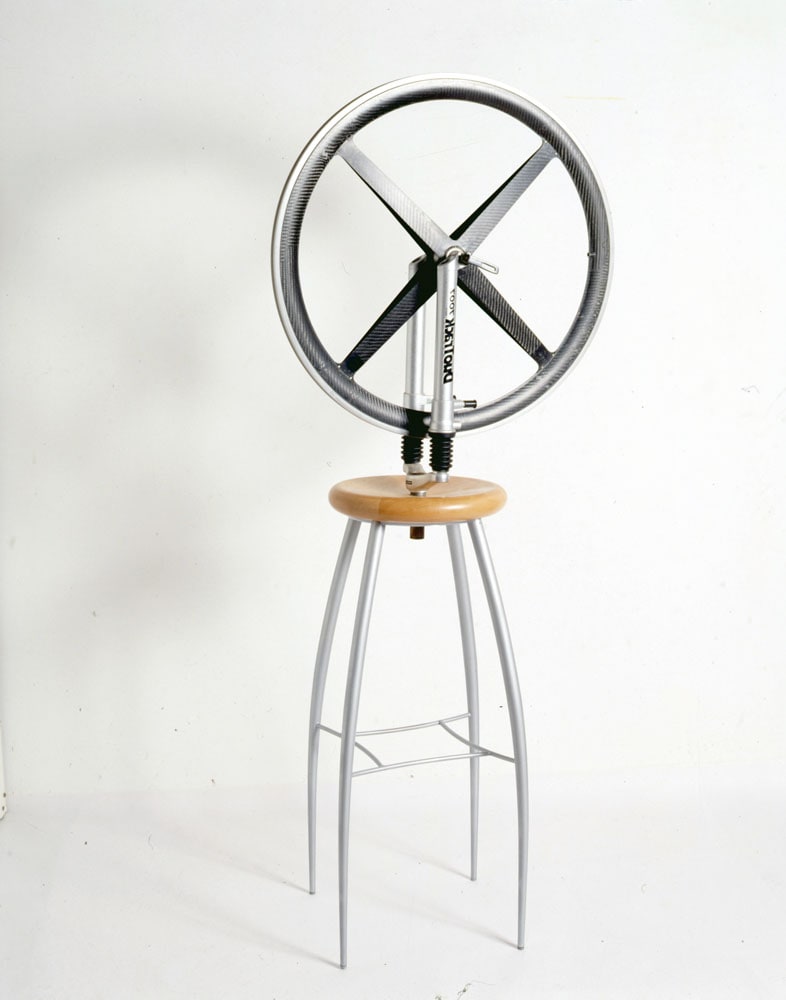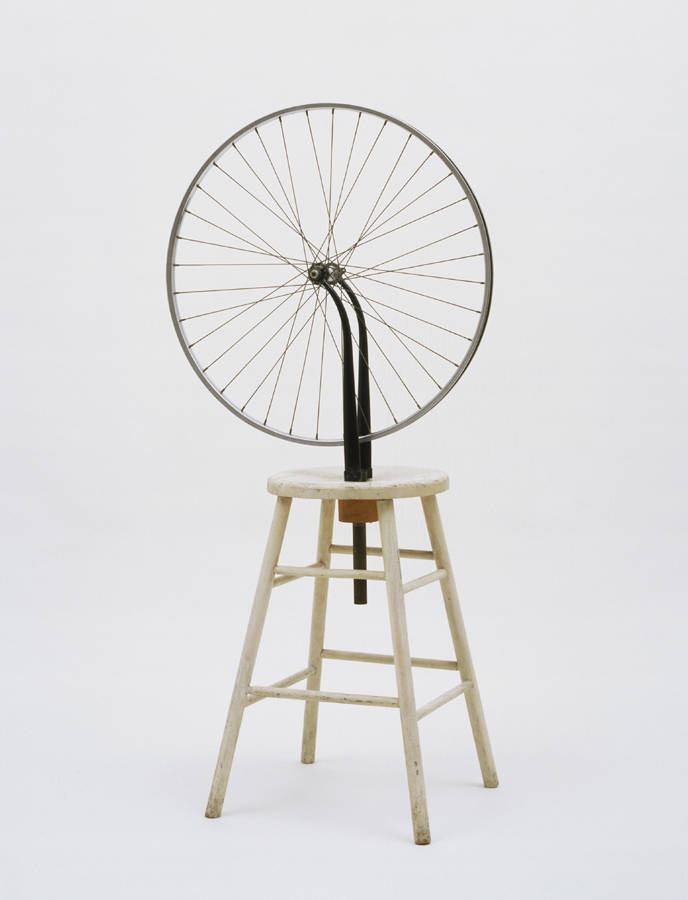12 November 2012
 Bicycle Wheel (Roue de Bicyclette), 1998
Bicycle Wheel (Roue de Bicyclette), 1998
Ben Jakober and Yannick Vu
Carbon bicycle wheel, Philippe Stark’s design stool
153 x 63 x 30 cm
Pablo Rico Collection, Mexico
In 1998 Ben Jakober and Yannick Vu collaborated on an obvious remake of Marcel Duchamp’s Roue de Bicyclette, his first “readymade” object. Duchamp combined a bicycle wheel, a fork and a stool to create a machine which served no purpose, subverting accepted norms of art. The original, 1913 version was lost, but Duchamp re-created the object in 1951. Vu and Jakober’s version uses a carbon wheel and a stool designed by Phillippe Starck.
 Roue de Bicyclette
Roue de Bicyclette
Marcel Duchamp, 1951 (third version, after lost original of 1913)
Metal wheel mounted on painted wood stool
129.5 x 63.5 x 41.9 cm
The Sidney and Harriet Janis Collection

Published as part of Pera Learning programs, “The Little Yellow Circle (Küçük Sarı Daire)” is a children’s book written by Tania Bahar and illustrated by Marina Rico, offering children and adults to a novel learning experience where they can share and discover together.

The New Year is more than just a date change on the calendar. It often marks a turning point where the weight of past experiences is felt or the uncertainty of the future is faced. This season, Pera Film highlights films that delve into themes of hope, regret, nostalgia, and new beginnings.
Tuesday - Saturday 10:00 - 19:00
Friday 10:00 - 22:00
Sunday 12:00 - 18:00
The museum is closed on Mondays.
On Wednesdays, the students can
visit the museum free of admission.
Full ticket: 300 TL
Discounted: 150 TL
Groups: 200 TL (minimum 10 people)